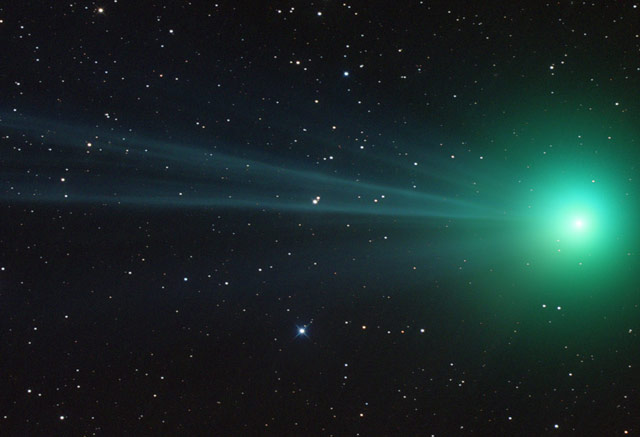Hi everybody!
Here's the latest article from the Astronomy site at BellaOnline.com.
Absolute Beginners - Observing the Sun
Study the Sun, but treat it with respect! Protect your eyes and use equipment with care, and you can count sunspots and see solar eclipses and transits. Or from the the comfort of your living room your computer will let you see space telescope images of solar flares, prominences and maybe a comet.
http://www.bellaonline.com/articles/art40643.asp
*Annular solar eclipse*
On May 20 there will be an annular solar eclipse. In an annular eclipse the Moon is lined up with the Sun and the Earth as for a total eclipse. However the orbit of the Moon isn't circular, so sometimes the new moon is far enough away from us that it doesn't quite cover the Sun, leaving a ring of sunlight around it. A partial or annular eclipse will be visible (weather permitting!) from eastern Asia through western North America. There is a map and details here: http://eclipse.gsfc.nasa.gov/OH/OHfigures/OH2012-Fig01.pdf
You can find out more about solar eclipses here: http://www.bellaonline.com/articles/art28395.asp
*Transit of Venus*
The transit of Venus occurs on June 6 and all or part of it may be visible in most of the world – the exceptions are South America and West Africa. Here is a map of the transit: http://eclipse.gsfc.nasa.gov/OH/tran/TOV2012-Fig01.pdf
You can find out more about transits of Venus here: http://www.bellaonline.com/articles/art28229.asp
I will be adding useful information via the Astronomy Forum during the coming month. Here is the link: http://forums.bellaonline.com/ubbthreads.php/topics/756784/Transit_of_Venus_Measuring_the#Post756784
*Get your eclipse viewers now!*
If you're going to have a chance to see one of these solar events, don't wait til the last minute and be disappointed because you can't get eclipse glasses. And please don't risk your eyesight by not protecting your eyes. Astronomers without Borders are selling them online. They're a reasonable price and the money will go to the good work of this organization. http://www.astronomerswithoutborders.org/support-awb/awb-merchandise.html
*Supermoon?*
The Moon was at perigee last night the fifth of May. This means that in its elliptical orbit around the Earth the Moon was at its closest point to us and it was also full. Someone (not an astronomer!) coined the term “supermoon” for this event. I love looking at the Moon, but have to admit that I can't tell the difference between a full “supermoon” and any other full moon. Yes, the disk of a “supermoon” appears somewhat larger than usual, but how big is that? When the Moon is in the sky, there isn't really a point of reference, so we don't really have a sense of its size.
Here is a picture taken in Vancouver, Canada: http://www.vancitybuzz.com/image.php?src=http://www.vancitybuzz.com/wp-content/uploads/2012/05/supermoon-vancouver-2012-1.jpg&w=650&a=t
Lovely photo, but the Moon isn't notably bigger or brighter than April's full moon. But I still think all full moons are gorgeous, even though they get in the way of viewing anything else in the sky.
I wish you clear skies. Please visit astronomy.bellaonline.com for even more great content about Astronomy.
To participate in online discussions, this site has a community forum all about Astronomy located here - http://forums.bellaonline.com/ubbthreads.php?ubb=postlist&Board=323
I hope to hear from you sometime soon, either in the forum or in response to this email message. I welcome your feedback!
Do pass this message along to family and friends who might also be interested. Remember it's free and without obligation.
Mona Evans, Astronomy Editor
http://astronomy.bellaonline.com
.
astronomy Newsletter








